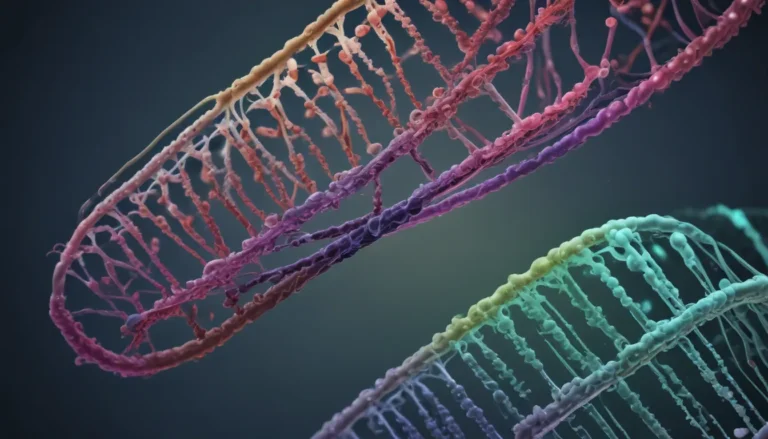A Note About Images: The images used in our articles are for illustration purposes only and may not exactly match the content. They are meant to engage readers, but the text should be relied upon for accurate information.
The world of chemistry is a captivating realm filled with intriguing elements, and one group that never fails to spark curiosity is the actinides. These elements, belonging to the actinide series at the bottom row of the periodic table, hold a special place in various fields, including nuclear energy, medicine, and scientific research.
Join us in this exploration as we delve into the enigmatic world of actinides and uncover 19 fascinating facts that shed light on their unique properties, applications, and potential future uses. From their discovery and radioactive nature to their industrial significance and impact on the environment, let’s embark on a journey to unravel the mysteries of these elusive elements.
A Closer Look at Actinides:
- Actinides, a group of 15 elements, play a vital role in nuclear power, medical imaging, and cancer treatment. Their distinct properties contribute to scientific research and our understanding of atomic structure. Ongoing studies aim to enhance nuclear power generation and waste management techniques.
The Actinide Series: Elements of Mystery
The actinide series comprises 15 elements, ranging from actinium to lawrencium, all of which are radioactive and exhibit similar chemical characteristics.
Unveiling Unique Electron Configurations
Actinides boast electron configurations that follow the pattern [Rn] 5f1-14 6d0-1 7s, contributing to their exceptional chemical behavior.
Uranium: The Iconic Actinide
Uranium, with an atomic number of 92, stands as the most renowned actinide. Widely used as nuclear reactor fuel, uranium holds crucial applications in both civilian and military contexts.
Delving into Industrial Applications
Actinides serve diverse industrial purposes, such as nuclear power production, radioactive isotope synthesis for medical imaging, and the advancement of cancer treatment through radiation therapy.
The Role of Plutonium in Nuclear Weapons
Plutonium, an actinide, plays a pivotal role in nuclear weapons production, offering its chain reaction-sustaining ability for peaceful and military nuclear programs.
Actinides: Champions of Scientific Research
Actinides stand as key players in scientific research, particularly in nuclear physics and chemistry fields. Their unique properties aid researchers in comprehending atomic structure and radioactivity.
Exploring Complex Radioactive Decay Chains
Actinides undergo intricate radioactive decay processes, leading to the generation of daughter isotopes. These decay chains can persist for millennia, emitting radiation throughout.
Natural Occurrence of Actinides
Certain actinides, like uranium and thorium, exist in substantial quantities in the Earth’s crust, serving as essential sources for energy production and scientific study.
Versatility in Oxidation States
Actinides display a wide range of oxidation states, extending from +3 to +With this flexibility, they form diverse chemical compounds and participate in various reactions.
Neptunium: The Pioneer Synthetic Actinide
Discovered in 1940, neptunium marked a significant milestone as the first synthetic actinide produced through human-made processes.
Practical Utilization in Nuclear Medicine
Actinides like americium and curium find practical applications in certain diagnostic and therapeutic roles within nuclear medicine, aiding in managing various medical conditions.
Exceptional Melting Points
Most actinides exhibit exceptionally high melting points compared to other elements, posing challenges in handling and processing due to their radioactive nature.
Catalyst Capabilities
Certain actinides, like uranium and thorium, serve as catalysts in chemically reactions, facilitating the conversion of reactants into desired products with implications in industries like petroleum refining.
Crucial for Atomic Structure Studies
Actinides offer profound insights into atomic structure and electron behavior, significantly contributing to fundamental principles in chemistry and physics.
Diverse Magnetic Properties
Actinides showcase a broad array of magnetic behaviors, including non-magnetic, paramagnetic, and antiferromagnetic traits, captivating researchers interested in magnetism studies.
Formation of Stable Coordination Compounds
With their flexible bonding arrangements, actinides can establish stable coordination compounds finding applications in catalysis, materials science, and environmental remediation.
Luminescent Mysteries Unveiled
Certain actinides like uranium and plutonium exhibit distinctive luminescent properties useful in materials and analytical chemistry, as well as in the development of specialized sensors and detectors.
Impact on the Environment
Actinides, notably radioactive isotopes like plutonium-239, present environmental challenges due to their extended half-lives and potential bioaccumulation. Proper waste management is vital to mitigate ecological impacts.
Driving Ongoing Nuclear Research
The realm of actinides remains a focal point in extensive nuclear research endeavors, aiming to advance nuclear power generation, develop cutting-edge nuclear fuels, and enhance waste management strategies.
In conclusion, the realm of actinides offers a captivating landscape of unique properties, diverse applications, and substantial contributions to scientific progress. These elements, with their radioactive essence, intricate chemistry, and significant impact on various fields, continue to intrigue researchers and enthusiasts alike.
Unlocking the Mysteries of Actinides
Actinides stand as captivating elements that have piqued scientific curiosity for generations, offering a realm of exploration from electronic configurations to energy production. Understanding these elements not only enriches our grasp of fundamental chemistry but also shapes advancements in energy, environment, and medicine. The 19 enthralling facts unveiled in this journey merely scratch the surface of the boundless secrets awaiting discovery within the enigmatic world of actinides. As scientists delve deeper into their realms, we anticipate unveiling even more of their captivating mysteries.
FAQs:
-
What are actinides?
Actinides are a series of chemical elements within the Actinide series of the Periodic Table characterized by the filling of 5f orbitals with electrons. -
Why are actinides significant?
Actinides have diverse practical applications, ranging from nuclear energy production to medical isotope synthesis and scientific exploration. -
Are actinides radioactive?
Yes, actinides exhibit high radioactivity due to their unstable atomic nuclei, offering benefits in energy production but posing challenges in handling. -
How are actinides utilized in nuclear reactors?
Actinides like uranium and plutonium serve as fuel in nuclear reactors, undergoing fission processes to generate heat converted into electricity. -
Are actinides naturally occurring?
Yes, actinides are found in trace amounts in the Earth’s crust, with uranium and thorium being the most abundant elements. -
Can actinides be present in living organisms?
Actinides have an affinity for biological compounds and can be absorbed by living organisms, potentially posing risks due to their toxicity and extended half-lives.
As you delve into the captivating realm of actinides, remember the invaluable contributions these elements make to advancements in science, technology, and beyond. Let the mysteries of actinides inspire your journey of discovery and innovation, shaping a brighter future guided by the wonders of chemistry and scientific exploration.






